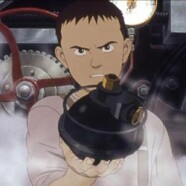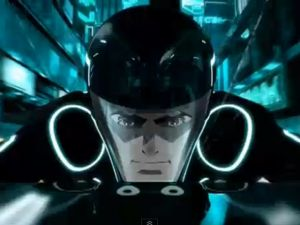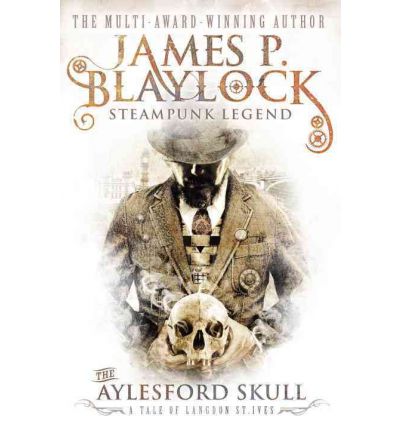Review: Steamboy
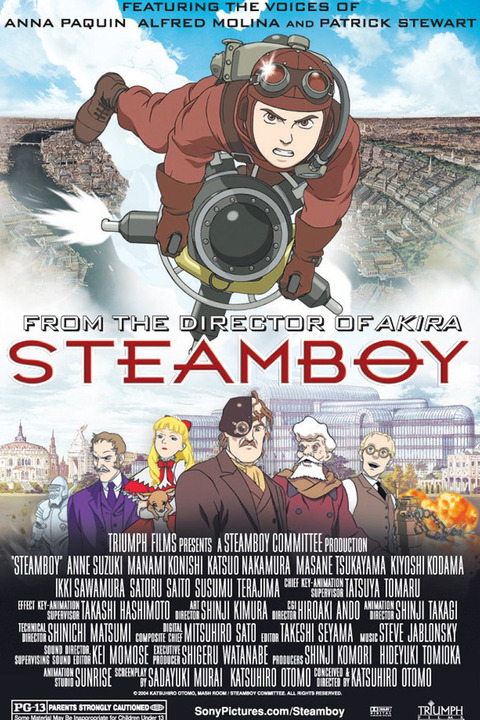 I am one of those who simply does not get Anime.  Most the examples I’ve seen – and I’ve seen plenty, believe me – are riddled with substandard animation quality, wacky pop tunes that do not belong, and plots that make almost no sense whatsoever.  For those who enjoy the genre, I’m sorry, but that’s just the result of my experiences.  Having said that, there is an exception to everything, and it is with great joy and amazement that I find one such exception.  Today I discovered Steamboy.  Curiosity got the better of me, and I’m a bit of a sucker for a good steampunk tale, so I thought I’d give it a shot.
I am one of those who simply does not get Anime.  Most the examples I’ve seen – and I’ve seen plenty, believe me – are riddled with substandard animation quality, wacky pop tunes that do not belong, and plots that make almost no sense whatsoever.  For those who enjoy the genre, I’m sorry, but that’s just the result of my experiences.  Having said that, there is an exception to everything, and it is with great joy and amazement that I find one such exception.  Today I discovered Steamboy.  Curiosity got the better of me, and I’m a bit of a sucker for a good steampunk tale, so I thought I’d give it a shot.
It’s Victorian era London, as one might expect of such a story, shortly before the first ever World Expo where science is about to dictate the course of human development.  The story centers around the character of Ray (voiced by Anna Paquin), who is charged by his grandfather, Dr. Lloyd Steam (voiced by Patrick Stewart), to protect the invention known as the “Steam Ball” at all costs following the death of Ray’s father, Dr. Eddie Steam (voiced by Alfred Molina).  Ray is told to deliver the Steam Ball to entrepreneur Robert Stephenson (voiced by Oliver Cotton) and to keep it away from the Expo.  Along for the ride is the young, spoiled, and aptly-named Scarlett O’Hara (voiced by Kari Wahlgren), heiress to the O’Hara Foundation that’s funded the work of both Dr. Eddie and Dr. Lloyd.  Like her classic film namesake, young Scarlett deserves to be slapped, “often, and by someone who knows how.”  (My two Republic credits for whatever they’re worth.)  During the course of this adventure, Ray learns that his father has survived, and while he’s pushing forward with the science of the Steam Ball on a new project known as the Steam Castle, the grandfather is now opposing the work and puts Ray in the unfortunate position of having to choose a side.  As you can see, naming characters isn’t the strong point for this film.
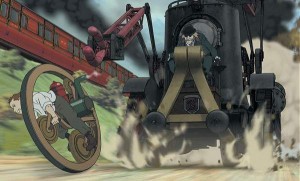 Steamboy is, on the surface, a fun little movie.  Visually, it’s got a lot of heart, and the animation is gorgeous in spite of the weird lighting that I see many Anime productions.  The best way to describe how there’s some tonal quality missing is to say that it looks like everything was lit by harsh flourescent lighting, and then shaded to about 70%.  Once you get past that, the detail of the drawings and the animation itself are amazing.  There is not one instance where the characters look like cardboard cutouts pasted to popsicle sticks.  There are no speed lines faking the illusion of animation with the aforementioned cutout character floating across the screen in still shot.  When speed lines are used, it is done so sparingly, and with attention to the idea of texture and substance as opposed to mere gimmick.  There are no wide-eyed goofy expressions on spiky-hair twits to distract the viewer every 30 seconds.  In short, nearly everything I abhor about Anime is gone.  What’s left is a thing of beauty.  Every obligatory steampunk reference can be found here, from airships to rocket packs, to gears and brassworks aplenty, and no expense was spared to make it look cool.  One thing I will never fault Anime for is that there is rarely an equal when it comes to drawing technology.  Some might say in response, “well of course it looks good – it’s the director of Akira.”  I didn’t like Akira either, so that’s not a selling point.  What is a selling point is clean, smooth animation without the need to flashburn my retinas.
Steamboy is, on the surface, a fun little movie.  Visually, it’s got a lot of heart, and the animation is gorgeous in spite of the weird lighting that I see many Anime productions.  The best way to describe how there’s some tonal quality missing is to say that it looks like everything was lit by harsh flourescent lighting, and then shaded to about 70%.  Once you get past that, the detail of the drawings and the animation itself are amazing.  There is not one instance where the characters look like cardboard cutouts pasted to popsicle sticks.  There are no speed lines faking the illusion of animation with the aforementioned cutout character floating across the screen in still shot.  When speed lines are used, it is done so sparingly, and with attention to the idea of texture and substance as opposed to mere gimmick.  There are no wide-eyed goofy expressions on spiky-hair twits to distract the viewer every 30 seconds.  In short, nearly everything I abhor about Anime is gone.  What’s left is a thing of beauty.  Every obligatory steampunk reference can be found here, from airships to rocket packs, to gears and brassworks aplenty, and no expense was spared to make it look cool.  One thing I will never fault Anime for is that there is rarely an equal when it comes to drawing technology.  Some might say in response, “well of course it looks good – it’s the director of Akira.”  I didn’t like Akira either, so that’s not a selling point.  What is a selling point is clean, smooth animation without the need to flashburn my retinas.
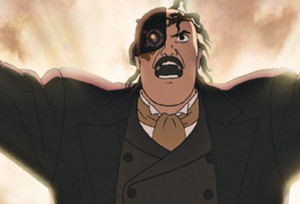 Story-wise, it’s a bit preachy.  Unlike a story like, say, Frankenstein, where the possibilities of science are presented as nothing but evil, Steamboy squarely puts the role of science at the fork in the road and declares openly that humanity is not yet ready to wield its awesome potential.  The blame falls not on science, but on capitalism and the greed that pushes science into making weapons of war.  Did I say this was a bit preachy?  Let me rephrase that.  It’s incredibly preachy.  You can decide for yourself in the midst of the East vs. West philosophical differences why it might come across that way, but this story does come from the country that gave us Godzilla, and all that implies.  Like Frankenstein, Godzilla‘s overtones are there for a reason, and it’s up to the honorable characters within the story to make the best of it for all of humanity.  At least, that’s certainly how it comes across to me, but then, I’m an American.  When the story isn’t being preachy (and it does let up here and there), it does provide an interesting lens to see the Western world through the eyes of Eastern philosophy.
Story-wise, it’s a bit preachy.  Unlike a story like, say, Frankenstein, where the possibilities of science are presented as nothing but evil, Steamboy squarely puts the role of science at the fork in the road and declares openly that humanity is not yet ready to wield its awesome potential.  The blame falls not on science, but on capitalism and the greed that pushes science into making weapons of war.  Did I say this was a bit preachy?  Let me rephrase that.  It’s incredibly preachy.  You can decide for yourself in the midst of the East vs. West philosophical differences why it might come across that way, but this story does come from the country that gave us Godzilla, and all that implies.  Like Frankenstein, Godzilla‘s overtones are there for a reason, and it’s up to the honorable characters within the story to make the best of it for all of humanity.  At least, that’s certainly how it comes across to me, but then, I’m an American.  When the story isn’t being preachy (and it does let up here and there), it does provide an interesting lens to see the Western world through the eyes of Eastern philosophy.
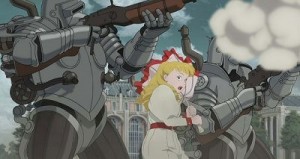
It clocks in at just over two hours, and very little of that is wasted time.  The story moves at the speed of the technology.  For you soundtrack buffs out there, Steve Jablonsky’s score captures the wonder and adventure of the story.  To my ears, it sounds like a cross between James Horner’s overall style, mixed with influence from Klaus Badelt’s The Time Machine score.  There’s nothing distracting about it, certainly no wacky pop tunes to throw it off.  Bottom line, if, like me, you’re inclined to a little steampunk fun, this one’s worth the watch.

